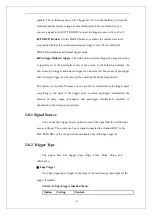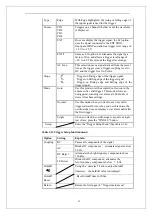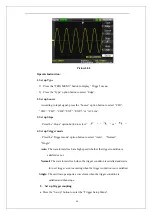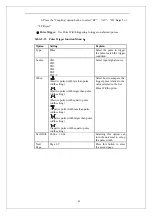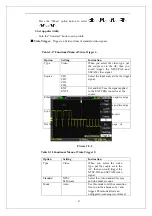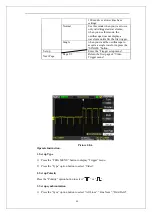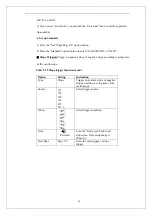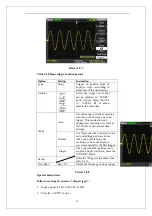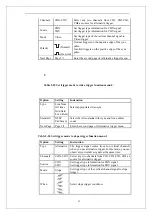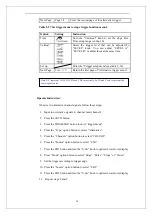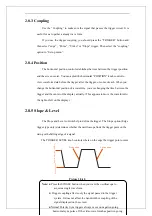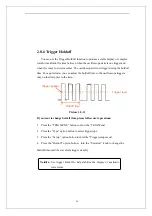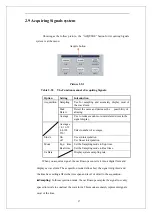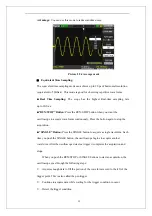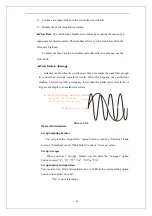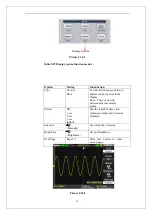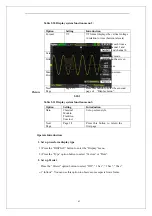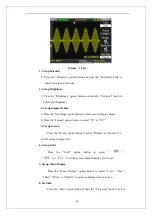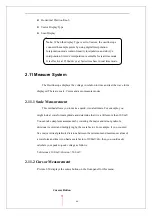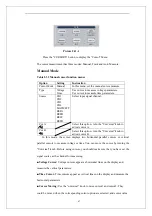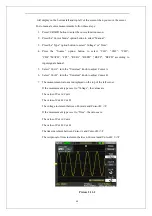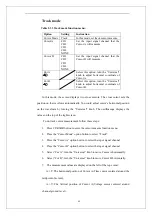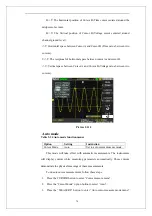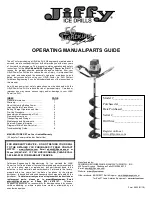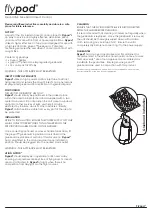
55
2.8.3 Coupling
Use the “Coupling” to make sure the signal that passes the trigger circuit. It is
useful for us to gather a steady wave form.
If you use the trigger coupling, you should press the “TRIGGER” button and
then select “edge” , “Pulse” , “Video” or “Slope” trigger. Then select the “coupling”
option in “Set up menu”.
2.8.4 Position
The horizontal position control establishes the time between the trigger position
and the screen center. You can adjust the horizontal “POSITION” knob control to
view waveform data before the trigger, after the trigger, or some of each. When you
change the horizontal position of a waveform, you are changing the time between the
trigger and the center of the display actually. (This appears to move the waveform to
the right or left on the display.)
2.8.5 Slope & Level
The Slope and Level controls help to define the trigger. The Slope option (Edge
trigger type only) determines whether the oscilloscope finds the trigger point on the
rising or the falling edge of a signal.
The TRIGGER LEVEL knob controls where on the edge the trigger point occurs.
Falling edge
Rising edge
T
ri
g
g
e
r
le
v
e
l
c
a
n
b
e
a
d
ju
s
te
d
v
e
rt
ic
a
lly
Picture 2.8-10
Note:
●
Press the SINGLE button when you want the oscilloscope to
acquire a single waveform.
●
. Trigger coupling affects only the signal passed to the trigger
system. It does not affect the bandwidth or coupling of the
signal displayed on the screen.
●
Normal Polarity Sync triggers always occur on negative-going
horizontal sync pulses. If the video waveform has positive-going
Summary of Contents for SDS1000 Series
Page 146: ...138 Coupling DC...


